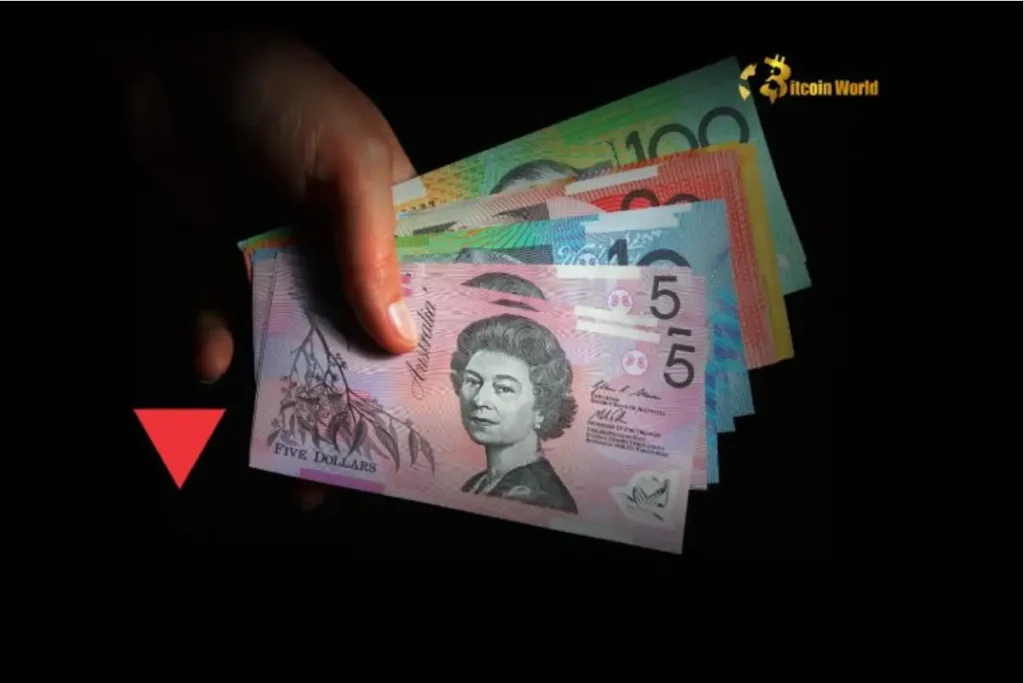Australian dollar Plunges After Shock RBA Rate Cut Decision

BitcoinWorld
Australian dollar Plunges After Shock RBA Rate Cut Decision
For those navigating the dynamic world of cryptocurrencies, understanding global macroeconomic shifts is crucial. The recent move by the Reserve Bank of Australia (RBA) to cut interest rates has sent ripples through traditional financial markets, particularly impacting the Australian dollar. This decision, driven by evolving views on the economic outlook Australia faces, highlights the interconnectedness of global finance and its potential, albeit indirect, influence on investor sentiment across all asset classes, including digital ones.
Why Did the RBA Announce a Rate Cut?
The Reserve Bank of Australia’s decision to implement an RBA rate cut was not made lightly. It reflects the central bank’s assessment of current economic conditions and future projections. While the specifics of their statement detailed various factors, key drivers often include:
Concerns about slowing economic growth or potential recession risks.
Inflation rates remaining below the target range, signaling weak demand.
Rising unemployment or underemployment figures.
Global economic headwinds impacting domestic prospects.
By lowering the official cash rate, the RBA aims to stimulate borrowing and spending, making it cheaper for businesses to invest and for consumers to take out loans. This theoretically boosts economic activity, helping to counter deflationary pressures and support employment. The recent move signals the RBA’s proactive stance in trying to guide the economy through a period they perceive as uncertain.
How Did This Impact the Australian Dollar?
Immediately following the announcement of the RBA rate cut, the value of the Australian dollar experienced a noticeable decline against major currencies. This is a typical reaction in the Forex news cycle when a central bank lowers rates. Here’s why:
Lower Yields: A lower interest rate makes holding Australian dollar-denominated assets (like bonds or bank deposits) less attractive compared to assets in countries with higher rates. This reduces demand for the AUD.
Capital Outflow: Investors seeking higher returns may move their capital out of Australia, selling AUD to buy other currencies, further depressing its value.
Economic Sentiment: A rate cut can sometimes be interpreted by markets as the central bank signaling weakness in the economy, which can weigh on the currency.
The pairing most closely watched is often the AUD USD. The rate cut widened the interest rate differential between Australia and the United States (assuming the US Federal Reserve maintains or increases rates), making the USD relatively more appealing and causing the AUD USD pair to fall.
Understanding the Economic Outlook for Australia
The RBA’s decision provides significant insight into their perspective on the economic outlook Australia faces. Their forward guidance often accompanies the rate decision, detailing the factors influencing their policy stance. They typically highlight:
Projections for inflation, economic growth (GDP), and unemployment.
Assessment of global economic conditions and geopolitical risks.
Evaluation of domestic factors like household spending, business investment, and housing market trends.
A rate cut suggests the RBA believes the balance of risks is tilted towards weaker growth or persistent low inflation. This outlook can influence everything from government policy decisions to business investment strategies and consumer confidence. It’s a signal that policymakers see a need to provide monetary stimulus to support the economy’s trajectory.
Challenges and Opportunities in the Wake of the Rate Cut
An RBA rate cut presents both challenges and potential opportunities:
Challenges:
Savers Suffer: Lower interest rates reduce returns on savings accounts and fixed-income investments, negatively impacting individuals relying on interest income.
Asset Bubbles: Excessively low rates can sometimes contribute to inflated asset prices (like housing or stocks) as investors chase yields.
Currency Volatility: The Australian dollar can become more volatile as traders react to rate changes and economic data, creating uncertainty for businesses involved in international trade.
Signaling Weakness: If the market perceives the rate cut as a sign of significant underlying economic problems, it can damage confidence.
Opportunities & Actionable Insights:
Borrowers Benefit: Cheaper loans can make mortgages and business finance more affordable, potentially stimulating activity.
Exporters Gain: A weaker Australian dollar makes Australian goods and services cheaper for international buyers, potentially boosting exports.
Investors: Lower rates can support equity markets by making bonds less attractive and reducing borrowing costs for companies. For those in crypto, monitoring currency movements like AUD USD provides context on global liquidity and risk appetite shifts.
Property Market: Lower mortgage rates can provide support to the housing market, potentially increasing affordability (though this also links back to asset bubble risks).
Staying informed through reliable Forex news sources is key to navigating these shifts and identifying potential impacts on various investment strategies.
The Global Forex Market Perspective
The RBA rate cut and the subsequent movement in the Australian dollar are significant events within the global Forex news landscape. The AUD is considered a major currency, and its movements influence other pairs and market sentiment. Traders analyze these decisions intensely, looking for clues about economic health and future policy direction.
The reaction of the AUD USD pair is particularly watched globally, given the US dollar’s status as the world’s primary reserve currency. A significant move in this pair can reflect broader shifts in risk appetite – the AUD is often seen as a ‘risk-on’ currency due to Australia’s commodity exports, while the USD is often a ‘safe-haven’. A weakening AUD following a rate cut might align with a period where global investors are becoming more cautious.
Other AUD pairs, such as AUD/JPY or AUD/NZD, also react, reflecting the relative economic strength and monetary policy stances of Australia compared to Japan and New Zealand. Understanding these cross-currency dynamics is vital for anyone trading or investing in the Forex market.
What Lies Ahead for the Australian Economy?
The economic outlook Australia faces post-rate cut is subject to various factors. The effectiveness of the monetary stimulus will depend on how businesses and consumers respond. Key indicators to watch include:
Future inflation data: Will the rate cut help push inflation back towards the RBA’s target?
Employment figures: Does the stimulus lead to job creation or reduced unemployment?
Retail sales and consumer confidence: Do lower rates encourage more spending?
Business investment surveys: Does cheaper finance lead to increased investment?
Global economic conditions: How do international factors continue to impact Australia?
The RBA will closely monitor these indicators to determine future policy actions. Further rate cuts or even eventual hikes are possibilities, depending on how the economic landscape evolves. Uncertainty remains a defining feature of the current outlook.
Summary: Navigating the Impact of the RBA’s Move
The recent RBA rate cut underscores the challenges facing the economic outlook Australia currently navigates. This decision has directly impacted the Australian dollar, causing it to slip against counterparts like the US dollar, as seen in the movement of the AUD USD pair. While intended to stimulate the economy by making borrowing cheaper, the move also poses challenges for savers and highlights underlying economic uncertainties.
For participants in global markets, including those interested in cryptocurrency, understanding these macro events through channels like Forex news is essential. Central bank actions and currency movements reflect broader economic health and investor sentiment, which can indirectly influence capital flows and risk appetite across all asset classes. The path ahead for the Australian economy will depend on how effectively the rate cut achieves its objectives and how external economic forces play out.
To learn more about the latest Forex market trends, explore our article on key developments shaping currency movements and global economic sentiment.
This post Australian dollar Plunges After Shock RBA Rate Cut Decision first appeared on BitcoinWorld and is written by Editorial Team







